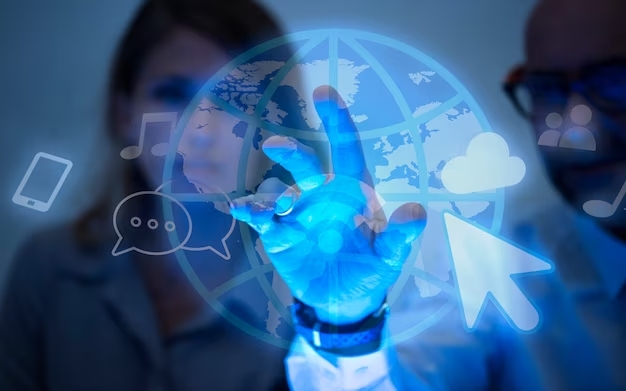Web 2.0 is a term that became popular in the mid-2000s to describe the second generation of the World Wide Web, which emphasized user-generated content, usability, and interoperability. Some of the defining characteristics of Web 2.0 platforms include:
In the context of SEO (Search Engine Optimization), Web 2.0 has several implications:
- Link Building: Many SEO practitioners began to use Web 2.0 platforms to build backlinks to their websites. They would create profiles, blogs, or pages on these platforms and link back to their main websites.
- Content Syndication: Blogging platforms and content-sharing platforms were used to syndicate content, often leading to increased visibility and more backlinks.
- Social Signals: As social media platforms grew, there was a belief in the SEO community that social signals (like shares, likes, and tweets) might influence search rankings. While the direct impact of social signals on rankings has been debated, there’s no doubt that positive social engagement can drive traffic and amplify content visibility.
- User-generated content: Websites that permitted user reviews, comments, or other user-generated material usually benefited from new, frequently updated content, which can be helpful to search engines.
- Reputation and Authority: Web 2.0 platforms, especially social media, play a role in online reputation management. Positive and negative mentions on these platforms can influence a brand’s reputation, which in turn can indirectly impact SEO.
It’s worth noting that while Web 2.0 platforms can offer SEO opportunities, it’s essential to use them ethically and avoid spammy practices. Creating low-quality, thin content on these platforms solely for backlinks, for instance, can lead to penalties or diminished SEO value.
Impact of Web 2.0:
- Social Networking: Websites like Facebook, Twitter, and LinkedIn allow users to connect with each other and share content.
- Interactive platforms: Websites or platforms that allow for user comments, reviews, or other types of interactions.
- Shift from Passive to Active: Web 2.0 transformed users from passive consumers of content to active creators, contributors, and collaborators.
- Democratization of Media: Before Web 2.0, media creation and distribution were largely controlled by big corporations. With platforms like YouTube and blogs, anyone could become a content creator.
- Crowdsourcing: Web 2.0 enabled collective intelligence gathering and problem-solving, with platforms like Wikipedia serving as prime examples.
- Rich User Experiences: Web 2.0 introduced more dynamic and interactive web applications, which led to improved user experiences. Technologies like AJAX allowed for smoother and more interactive web pages.
- Economic Shifts: As user-generated content and online cooperation proliferated, new business models and digital advertising tactics began to develop.
Examples of Web 2.0:
- Blogging Platforms: WordPress, Blogger, and Tumblr enabled individuals to share their thoughts, experiences, and knowledge with the world.
- Social Media Platforms: Examples of well-known platforms that enable users to interact, share, and communicate in real-time include Facebook, Twitter, Instagram, and LinkedIn.
- Content Sharing: SlideShare for presentations, SoundCloud for music, Flickr for photographs, and YouTube for video sharing.
- Wikis: Wikipedia is the most prominent example, allowing users to collaboratively create and edit content.
- Review Sites: Websites like Yelp and TripAdvisor let users rate businesses and share their experiences.
- Collaborative Tools: Real-time user collaboration is made possible by cloud-based solutions like Google Docs.
- Social Bookmarking: Users could bookmark and share their favourite web pages on websites like Delicious and StumbleUpon.
Web 2.0 essentially changed how people interacted with the internet, transforming them from passive consumers of content into active producers and distributors of such content.
Advantages and Disadvantages of Web 2.0
Advantages of Web 2.0:
- User Participation: Web 2.0 platforms empower users to create, modify, and share content, fostering a culture of participation and collaboration.
- Democratization of Information: Previously, content creation was limited to a few entities, like media houses. Web 2.0 allows anyone to become a content creator.
- Interactivity: The dynamic nature of Web 2.0 applications facilitates greater interactivity between users and platforms, resulting in richer user experiences.
- Social Connectivity: Social media sites like Facebook, Twitter, and LinkedIn have revolutionised communication by facilitating cross-border connections, sharing, and collaboration.
- Collaboration: Web 2.0 tools like wikis and collaborative document editing software enable users to work together in real-time, fostering teamwork and collective intelligence.
- Economical: Many Web 2.0 platforms and technologies are free or inexpensive, lowering entry barriers for both users and enterprises.
- Customization: Many Web 2.0 platforms offer personalization features, allowing users to customize their experience based on preferences and behavior.
Disadvantages of Web 2.0:
- Information Overload: The democratization of content creation can lead to an overwhelming amount of information, making it challenging to discern quality content from noise.
- Privacy Concerns: Sharing personal information on social media platforms can lead to privacy breaches. Users might unknowingly share data that can be exploited.
- Dependence on Connectivity: Many Web 2.0 applications rely on a constant internet connection. In areas with limited or no connectivity, these tools may be less effective.
- Security Risks: Platforms that rely on user-generated content are often targets for cyberattacks, phishing schemes, and other malicious activities.
- Digital Divide: While Web 2.0 offers numerous opportunities, not everyone has equal access to these tools due to socio-economic barriers, creating a digital divide.
- Ephemeral Nature of Content: Content on some Web 2.0 platforms can be transient. For instance, a tweet might get buried under new tweets within minutes.
- Decreased Productivity: With the rise of social media and other Web 2.0 distractions, users might find themselves spending excessive time on non-productive activities.
In conclusion, while Web 2.0 has brought about significant advancements in the way we create, consume, and share information online, it also comes with its set of challenges. Balancing the advantages with the disadvantages is crucial for effective and safe use.
